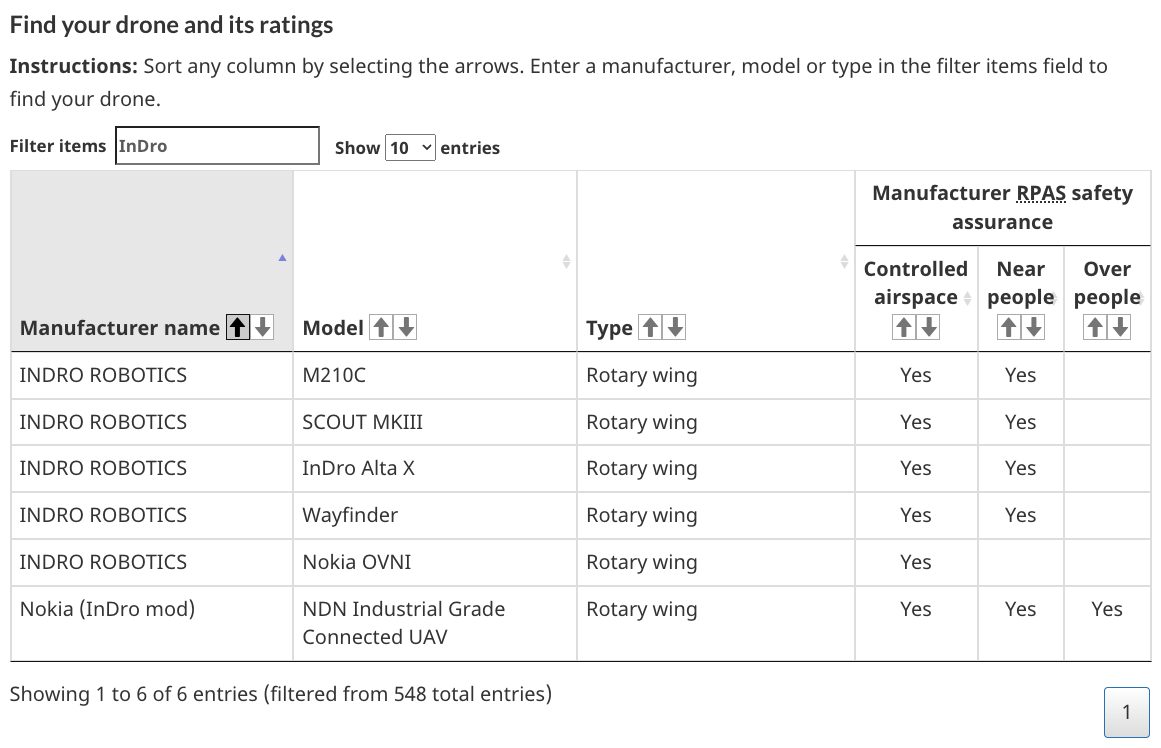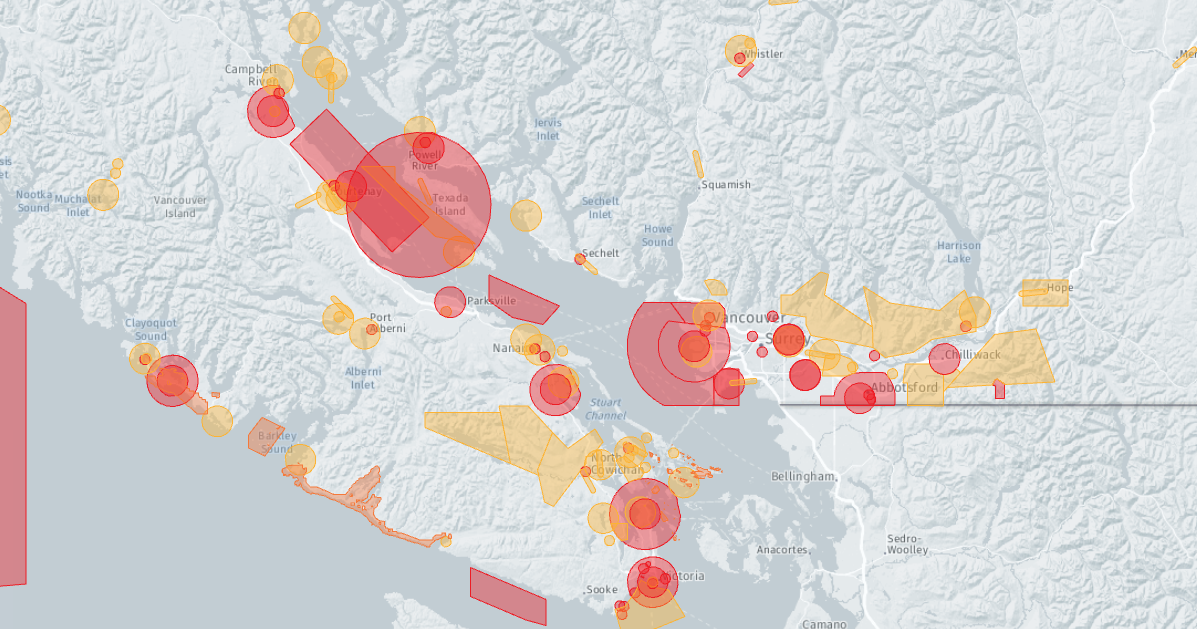You asked me a question about flying a drone in Canada, now I’m going to turn it around and ask you a bunch.
- What is the weight of the drone are you flying?
- Are you a Canadian/Permanent Resident or a visitor?
- Does the land you’re flying from have restrictions?
Let’s deal with why the answers to these questions matter and then we’ll get into flying a drone in Canada. I’ll give you some resources to help you determine where you can fly.
The weight of the drone you’re flying
If the drone weighs less than 250g at takeoff, then your options for where you can fly aren’t as restricted. This is because a 249g or less drone is called a microdrone in Canada and is subject to fewer Transport Canada regulations than heavier drones. You need to stay out of restricted airspace like that over and around forest fires (CAR 601.04 and 601.15 apply to all aircraft) and you need to abide by CAR 900.06 aka the “don’t be an idiot” rule. The reg states:
Reckless or Negligent Operation
900.06 No person shall operate a remotely piloted aircraft system in such a reckless or negligent manner as to endanger or be likely to endanger aviation safety or the safety of any person.
While this is great, it’s not super prescriptive aka do this/don’t do this. So you can fly in controlled airspace, near airports, Beyond Visual Line of Sight and above 400’ AGL but it’s on you as the pilot to ensure you’re not endangering the safety of anyone you’re sharing the sky with or anyone who might be below you on the ground. Which can be tricky to do reliably if you’re say, in controlled airspace, near airports, flying beyond visual line of sight and/or above 400’ AGL.
Drones above 250g (aka small RPAS) get you into certification and registration territory and there are some great resources to help you determine where is allowed to fly depending on your certification.
Want to fly drones heavier than 25kg? You’ll currently need read more an SFOC (Special Flight Operation Certificate) though in 2025 that will change and Advanced Certified pilots will be able to fly drones up to 150kg!
Where you can fly will depend on your certification as the pilot of it and if the manufacturer has declared the drone you’re flying is safe for. There are three categories they can declare for – controlled airspace, near people, over people – and each requires supporting documentation that the manufacturer provides to Transport Canada.
Find out what your drone is declared for here.

Are you Canadian/Permanent Resident or a visitor?
The reason why this matters is to do with pilot certifications. There are two, kind of three in Canada. Basic, Advanced and the “kind of” third is an SFOC (Special Flight Operation Certificate).

If you’re Canadian and flying a small RPAS (250g or more) then you’ll need a pilot certificate to fly, full stop. Doesn’t matter where you are, you’ll need a certification and the drone will need to be registered. Check out this link for more on certifications.
Your certification determines where you can legally operate. There are restrictions around airports, heliports and with certain types of airspace you’ll want to abide by.
As a foreign visitor to Canada, you’ll need an SFOC to fly if your drone is 250g or more. Flying a microdrone does not require certification. If you’re Canadian and flying a microdrone, same deal as foreign operators – no certification required. Skipped the first paragraph? Now would be a good time to read it.
Does the land you’re flying from have restrictions?
So far we’ve really been talking about permission to access the air, but you’ll also need to consider the ground you’re operating from – taking off and landing on. Private property is typically a no-go unless you get express permission from the property owner. City/town land can have restrictions, depending on local bylaws. Click here for an assembly of RPAS-related bylaws and a spot to submit your own. Another big one to look out for is to do with parks. Most provincial/territorial parks (Saskatchewan being the exception) and all national parks and historic sites have prohibitions on all drones. Being a microdrone doesn’t help you in this situation. While technically speaking you could take off from outside a park and overfly park land, good luck arguing that one if you get fined. And don’t rely on “remoteness” to keep you safe from enforcement. It’s patrolled, strictly enforced and they have special tools to detect drones so they don’t need to see you to be able to see you.
Okay so what now?
NAV CANADA, the airspace authority in Canada, as a few tools for drone pilots to help you understand airspace permissions. The Map view doesn’t require a login and is a good spot to go to when you’re new to this world to see if you’ll need an advanced certification for the areas you plan to fly. The Portal view is what you’ll want to get set up as an advanced pilot so you can request controlled airspace permission but it’s also handy as a basic pilot to have an account for tracking and holding documents. Definitely set up your account in the browser, rather than the app. The app is great for field work, but is not the greatest UI for planning flights. And while NAV DRONE is great, it doesn’t have a layer to tell you what airspace exists above your flight path.

If you’ve read this far you’ve probably determined what category you/ your drone fall into.
- Microdrone
- Basic
- Advanced
Set your filters on NAV Drone accordingly, and the map will show you where is good to go.
- No colour – fine for all
- Orange – fine to fly in, but heads up there could be other airspace activities happening
- Orange with a grid – you’ve got an advanced filter on and those spots need airspace permission. The darker the orange, the longer it’ll take to get permission/more restrictions it’ll have on what gets approved.
- Red – no go for basic category pilots
To Summarize
- Microdrones can fly above 400’ and in controlled airspace and near airports as long as they’re not being a hazard
- Small RPAS have limitations based on the manufacturer and the operator (pilot). Use NAV Drone app or browser portal to determine requirements.
- Neither can fly in national parks and most provincial/territorial ones or off of private property without permission
So you’ve read all that and you’re like “Great! Lots of info! But…where can I fly?” here’s the steps I recommend.
- Look at the spot you want to fly on NAV Drone. Is it colourful? Do you have the right drone/pilot certificate to fly there?
- Make sure the spot isn’t in a restricted park
- Make sure the spot isn’t over a forest fire
If looking at all these coloured bubbles has you asking questions about airspace and airports, check out our blog here [link to airspace]
Even though it’s not required for microdrone pilots, a basic ground school course can be a great asset in helping you have the knowledge and context to make good decisions with the lack of prescriptive guidance from Transport Canada on what you can and can’t do. Check out our Basic Ground School here!
